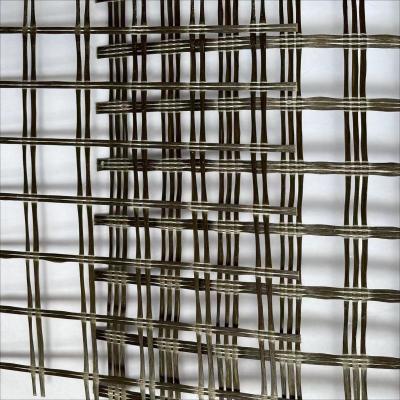Fiberglass geogrid is a high-performance geosynthetic material, which has been widely used in urban old road reconstruction projects because of its unique physical and chemical properties. The following is a detailed breakdown of its application.
1. Material Properties
The main raw material of glass fiber geogrid is glass fiber alkali-free and twistless roving, which is made into a mesh substrate through the international advanced warp knitting process, and then coated on the surface to form a semi-rigid product. It has high tensile strength and low elongation in both warp and weft directions, and has excellent properties such as high temperature resistance, low temperature resistance, aging resistance and corrosion resistance.
2. Application scenarios
Fiberglass geogrid has a wide range of application scenarios in the reconstruction of old urban roads, mainly including the following aspects:
2.1 Pavement reinforcement
In the reconstruction of old cement concrete pavement, glass fiber geogrid can enhance the structural strength of pavement and improve the overall service performance. It can reduce the occurrence of reflective cracks, because the glass fiber geogrid can transfer the load evenly and change the stress of reflective cracks from vertical direction to horizontal direction, thus reducing the stress of asphalt overlay.
2.2 Old road reinforcement
For aging pavement, fiberglass geogrid can play the role of reinforcement. It can reinforce subgrade and soft soil foundation, improve the overall bearing capacity of pavement and prolong the service life of road.
2.3 Prevention and control of reflective cracks
After the old cement concrete pavement is paved with asphalt concrete surface, reflection cracks are easy to appear. The laying of glass fiber geogrid can effectively prevent or slow down the reflection cracks of the original asphalt pavement, because it has good tensile strength and low elongation, and can adapt to the deformation of the pavement.
3. Construction method
The laying method of fiberglass geogrid usually includes the following steps:
3.1 Clean up the grassroots
Before laying a fiberglass geogrid, the base layer needs to be cleaned to ensure that it is clean and flat, free of debris and oil.
3.2 Laying the grille
Lay the fiberglass geogrid on the base layer according to the design requirements, ensuring that it is flat and wrinkle-free.
3.3 Fixed grille
Use nails or special retainers to secure the grille to the base layer, preventing it from shifting during construction.
3.4 Paving asphalt
Pave the asphalt mixture on the grille and compact it to form. In this way, the fiberglass geogrid is firmly embedded into the pavement structure.
4. Notes
When using fiberglass geogrid for renovation of old urban roads, you need to pay attention to the following points:
4.1 Material selection
Choose reliable quality fiberglass geogrid to ensure that its performance indicators meet the engineering requirements.
4.2 Construction quality
During the construction process, the construction quality must be strictly controlled to ensure that the grille is laid smoothly and firmly fixed to avoid wrinkles and hollows.
4.3 Environmental Protection
Pay attention to environmental protection during the construction process to avoid pollution to the surrounding environment.
To sum up, fiberglass geogrid has important application value in urban old road reconstruction projects. It can not only enhance the strength of pavement structure and improve the overall service performance, but also effectively prevent reflection cracks and prolong the service life of roads. During the construction process, attention needs to be paid to issues such as material selection, construction quality and environmental protection to ensure the quality and effect of the project.
Post time: Feb-14-2025




